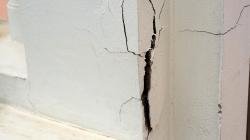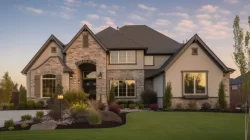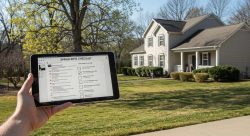Unlock the Secrets to a Pest-Free EIFS: Your Ultimate Guide to Prevention and Repair

Are you struggling with pest damage to your EIFS (Exterior Insulation and Finish Systems) on your building? The impact can result in costly repairs, such as moisture buildup resulting from woodpecker damage.
This article will guide you through easy-to-follow steps for preventing and handling EIFS pest problems for enhanced building protection. Stay with us, uncover some preventative measures all building owners should know!
Key Takeaways
- Pests like woodpeckers, termites, and rodents can seriously damage your EIFS-clad buildings. Take early action when you see signs of these pests.
- Regular maintenance can help protect your building from pest damage. This includes trimming tree branches, cleaning gutters, and replacing damaged shingles.
- Watch out for signs of pests in your building – such as visible EIFS damages, strange noises or smells, or any form of pest droppings around your property.
- Stop pests from entering by sealing small holes and cracks where they might get in. Keep trash properly stored to stop it attracting more pests!
The Risks of Pest Damage to EIFS
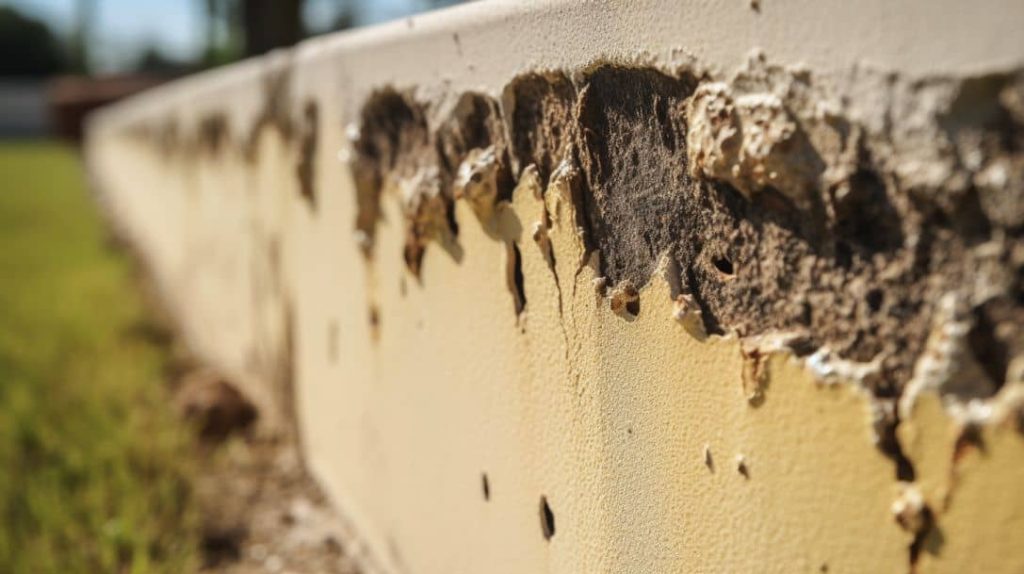
EIFS, or Exterior Insulation and Finish Systems, are not exempt from the risk of pest damage; pests such as woodpeckers may peck holes into your building’s facade while termites can undermine its structural integrity by eating away at the foam insulation.
Other insects or rodents could also pose a threat to EIFS by creating burrows or nests within it. This exposes the structure to potential water intrusion and moisture accumulation – factors that hasten the degradation of your property’s exterior.
Hence, understanding these risks is crucial for the effective maintenance and preservation of your EIFS-clad buildings.
Woodpecker damage
Woodpeckers pose a significant threat to buildings clad in EIFS. These birds peck into the surface creating multiple holes, which can lead to serious structural issues over time. The damage makes way for water intrusion that further leads to mold growth and pest infestation if left unattended.
Moreover, it can alter the aesthetic appeal of your building significantly. Proactive measures must be taken, including effective deterrent systems like BeakGuard®, to prevent these feathered foes from causing considerable harm to your property’s exterior structure and retaining its visual charm intact.
Termites
Termites pose a significant risk to EIFS (Exterior Insulation and Finish Systems). These tiny creatures can infiltrate wall systems, causing extensive damage that isn’t always apparent until it becomes severe.
Termite infestations often lead to moisture accumulation, mold growth, and deterioration of the synthetic stucco.
Over time, termite damage weakens the structure of an edifice. Pest control experts have reported countless cases where termites caused irreparable harm to EIFS-clad buildings. Termites find their way into these structures through tiny cracks or holes in the exterior finish.
The porous nature of EIFS makes it attractive for termite colonies as they seek out moist environments.
Taking swift action when spotting signs of these pests is vital in reducing potential harm to your building’s integrity and appearance. With regular inspections by a pest control expert and proactive use of deterrents such as boric acid spraying, you safeguard your valuable property against these destructive insects.
Other pests
Beware, as it’s not just woodpeckers and termites that can inflict harm on your EIFS. Insects like ants and beetles burrow into the exterior sheathing, posing serious threats to its structural integrity.
Even rodents such as mice and squirrels find ways to nest within these walls, damaging insulation while also creating the perfect breeding ground for harmful mold resulting from their waste.
A building’s aesthetics suffer too when pests like birds decide to use EIFS systems as nesting sites. No matter what type of critters you’re dealing with, securing your synthetic stucco against pest damage is vital in maintaining a safe and visually appealing property.
Signs of Pest Damage
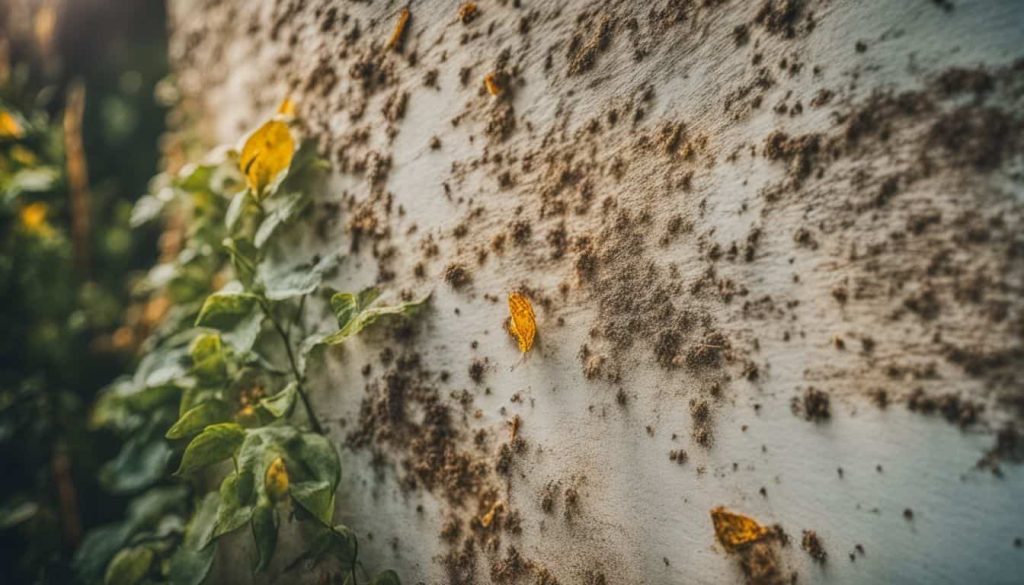
Watch out for visible surface damage to your EIFS, unexpected noises or odd smells within the building, and signs of pest droppings as these could indicate infestation.
Visible damage to EIFS
Visible damage to EIFS can serve as a warning signal of potential pest infestation. Common signs include small, uneven holes or larger gaping punctures in the synthetic stucco finish.
A woodpecker may create these markings while seeking insects hiding within the material. Additionally, you might notice discoloration or staining caused by water intrusion due to damaged areas.
These spots often appear darker and may grow larger over time if left untreated. Regular inspection ensures prompt detection and repair of such damages, thus preventing further complications like mold growth, pest intrusions, and structural problems.
It’s important that any observable damage is addressed immediately to maintain the integrity and aesthetics of your building’s exterior façade.
Strange noises or smells
Distinguishing strange noises or smells in your building could signify an underlying pest issue. Often, pests like rodents and insects are covert invaders, making their presence known through distinctive sounds such as scratching within walls or unpleasant odors deriving from hidden nests.
Scratching sounds might imply that rats or mice have found a way into EIFS structures and started gnawing on the materials.
Unusual smells can be another red flag indicating the need for immediate action. A musky scent often accompanies rodent infestations, while a sickly sweet odor might suggest the existence of roaches.
Similarly, termites generate an aroma similar to moldy wood when they invade EIFS homes. Hence, one should never disregard any odd smells circulating inside the buildings because it is always better to prevent potential pest damage than deal with its aftermath.
Pest droppings
Pest droppings are an unmistakable sign of an infestation. They often come in small, pellet-like forms and can be found around the property, especially near your EIFS (Exterior Insulation and Finishing System).
Spotting these early is crucial because it provides evidence of pest activity before any visible damage occurs to your building materials. Rodent droppings may pose a risk due to potential disease transmission, so ensure proper handling and cleaning methods are employed upon discovery.
Additionally, termite droppings or “frass” resemble tiny heaps of sawdust or wood shavings – another key indicator that your EIFS might be under attack. Proactive measures should be followed promptly after spotting any form of pest feces as it signifies active pests on site.
Prevention Methods

Proper maintenance and preventive measures can significantly reduce pest damage to your EIFS. Discover a range of strategies including regular trimming of tree branches, keeping gutters clean, and more essential tips in our guide below.
Trimming tree branches
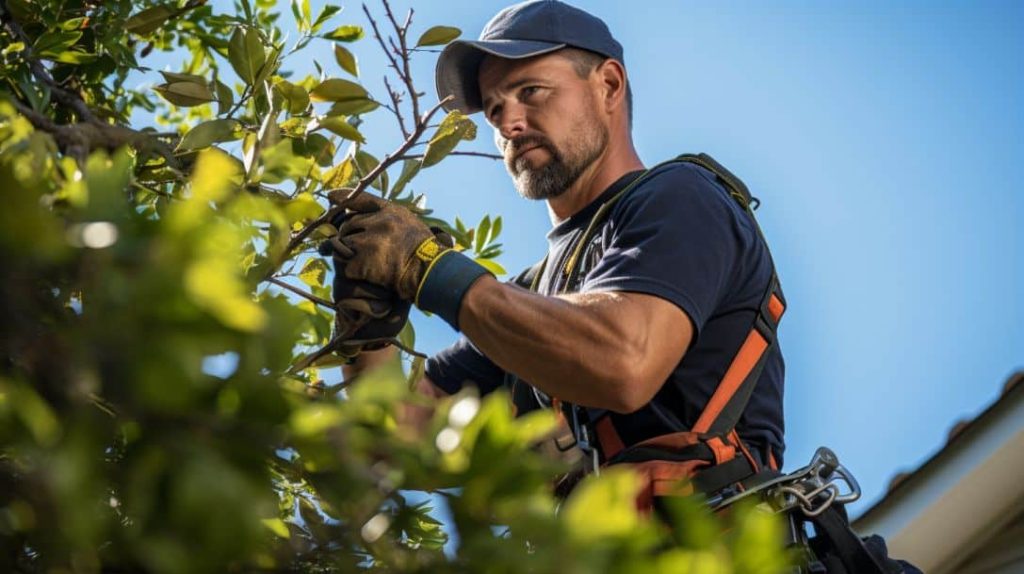
Trimming tree branches is a crucial step in protecting your EIFS from pest damage. Overgrown and touching branches provide pests an easy pathway to infiltrate your building. Bugs, termites, and small animals can effortlessly move from trees onto the exterior walls of your property.
By maintaining a sufficient gap between the tree branches and your property’s exterior, you restrict their access effectively. Always ensure you trim back any overhanging foliage or limbs that breach this space towards your building; it blocks these unwanted visitors’ entry points.
Please note that specific tools might be necessary for larger branches or taller trees—safety should remain paramount during this process.
Regular maintenance
Regular maintenance is an integral part of protecting your EIFS from pest damage. Paying careful attention to the condition of your exterior surface can prevent small issues from escalating into more serious problems.
Maintenance begins with basic tasks such as cleaning and inspecting the stucco regularly for any signs of cracks or damage.
Preventive measures include sealing off potential entry points and moisture-prone areas that may attract pests. Both pests and water intrusion pose grave threats to EIFS, leading to costly repairs if not addressed promptly.
Use a pressure washer carefully abiding by the manufacturer’s recommended low-pressure level while cleaning; this way you avoid accidentally causing harm to the stucco layers.
Equally important is maintaining other potentially vulnerable parts of your building structure where insects might seek refuge or breeding grounds, like gutters, overhangs, vents, doorframes and window sills.
Keep them clean and well-sealed against possible invasions. A well-maintained building doesn’t just stand strong against pests but also contributes significantly towards increasing its lifespan.
Replacing damaged shingles
Damaged shingles on your roof can be an open invitation for pests. The gaps or holes often serve as entry points, allowing everything from small insects to larger rodents to infiltrate your home’s protective barrier.
It’s crucial to replace any damaged shingles promptly, not just for the sake of appearance but also for pest control and building integrity. Hiring a professional contractor is usually the best way to ensure that replacements are carried out correctly, with each new shingle properly aligned and secure against wind, water intrusion, and potential pests like termites or woodpeckers.
Regular inspection of the roof allows you to spot damage early before it escalates into a bigger issue like water accumulation behind EIFS walls leading to mold problems or insect damage.
Consequently, proper maintenance including timely replacement of damaged shingles acts as one strategic step in safeguarding your EIFS from unwanted invaders.
Keeping gutters clean
Gutters clogged with leaves, twigs and other debris can become a perfect home for pests. Over time, stagnant water in blocked gutters becomes an attractive breeding ground for mosquitoes, and the clutter provides habitats for insects such as ants and termites.
Beyond these nuisances, rodents like rats may even find their way into your building through unclean gutters. By regularly cleaning your gutters, you eliminate these potential nesting sites, keeping harmful pests from damaging your building’s EIFS system or causing other structural problems.
This easy measure is crucial not only to prevent pest invasion but also to maintain the overall health of your structure by facilitating proper water drainage away from the foundation.
Proper trash disposal
Proper trash disposal is a powerful tool in the fight against pest invasions. Pests are naturally attracted to garbage as it provides them with an ample food source. By taking proactive steps, such as securing garbage cans with tight-fitting lids and ensuring regular waste collection, building owners can reduce the attraction for pests like rats, mice, or insects that can subsequently damage EIFS properties.
It’s not just about cleanliness but also about making your property less appealing to unwanted visitors who could cause significant structural harm over time.
Checking for entry points
Pest entry points in your building can be as tiny as a crack or gap. It’s necessary to inspect EIFS surfaces regularly for any small holes, cracks, or damaged regions that pests might exploit.
Worn out caulking around windows and doors, splits in the sheathing board behind the EIFS, or dislodged sealant joints may provide easy access for insects like termites and ants.
To deter rodents like rats and squirrels from gnawing their way into your building, it is imperative to identify potential access spots promptly. Pay close attention to gutters and roof junctions which often attract pests due to moisture accumulation and trapped debris.
Employing appropriate pest-resistant measures such as sealing off gaps with stainless steel wool pads or using caulk on small openings on EIFS surfaces effectively keeps these unwanted visitors at bay.
Protecting Your Home from Termites
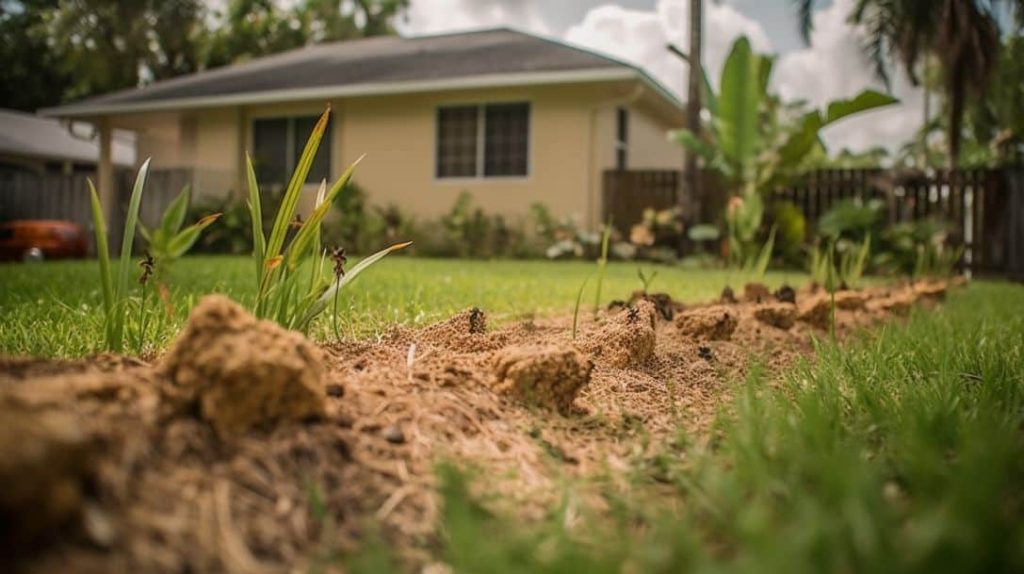
Safeguarding your home against termite damage is an essential part of maintaining your EIFS system, which can be achieved through regular inspections by a pest control expert and the application of boric acid sprays that deter these destructive pests.
Inspection by a pest control expert
Hiring a pest control expert is a vital step in protecting your EIFS from pest damage. These trained professionals possess the necessary skills and tools to detect hidden signs of infestations that can go unnoticed.
A comprehensive inspection includes checking walls, roofs, basements, crawl spaces, and other areas vulnerable to pests such as termites. Pest control experts not only identify existing problems but also point out potential threats and provide recommendations for preventive measures.
This proactive approach saves time, and money and prevents further damage to your property. Regular inspections by a qualified expert can ensure early detection of pests and keep your EIFS intact and long-lasting.
Using boric acid spraying
Boric acid spraying can be a powerful way to protect your EIFS from termites. This natural compound acts as a stomach poison that effectively eliminates these wood-eating pests. The acid easily penetrates through the termite’s exoskeleton and disrupts their metabolism, causing dehydration and ultimately death.
You simply need to mix boric acid with water in a spray bottle and apply it directly onto areas where you suspect termite activity. It is safe for humans and pets but always take care when handling any pest control substances.
Regular application of this method ensures continuous protection for your property against damaging termite invasions.
Innovative Solutions for Pest Protection

In today’s market, there exists an array of groundbreaking pest protection methods designed with the vulnerabilities of EIFS in mind.
Electromagnetic technology: By altering electromagnetic waves within walls, this method discourages rodents from nesting.
– Utilizing ultrasonic repellents: These devices emit high-frequency sounds that are unpleasant for pests but unnoticeable to human ears.
– Installing physical barriers: Materials like copper mesh can deter pests from entering weak spots in your EIFS cladding system.
– Biological control measures: These include beneficial insects and birds that naturally prey on common pests.
– Using environmentally friendly pesticides: Often called ‘biopesticides’, these are derived from natural substances like plants, bacteria, or minerals and do not harm non-target species or the ecosystem at large.
Remembering to apply advancements like heat treatments that exterminate termites without causing any structural damage is essential. One action often overlooked is moisture management strategies to limit water intrusion— a major attractor for many types of pests.
Further innovations feature advanced stucco coatings specifically formulated to resist woodpecker damage and other animal intrusions. Innovative solutions provide home owners sophisticated tools in their fight against damaging infestations while ensuring minimal impact on their environment and health.
BeakGuard®: A Solution for Woodpecker Damage

In the constant fight against pest damage to your EIFS, BeakGuard® emerges as a formidable solution specifically designed to mitigate woodpecker damages; in this section, we will break down how it works, outline its benefits and guide you on incorporating it into your latex paint for maximum protection.
How it works
BeakGuard® proves to be an effective solution against woodpecker damage. It employs a simple yet efficient mechanism that deters these birds without causing them harm. BeakGuard® is made from ingredients approved by the EPA, and works by creating an uncomfortable sensation in the bird’s beak when it pecks on treated surfaces.
This non-toxic method dissuades woodpeckers from returning and damaging EIFS once more. The application process for BeakGuard® is straightforward, requiring only to be mixed into your regular latex paint before painting your building’s exterior surface.
Benefits of using BeakGuard®
BeakGuard® serves as a powerful tool in protecting your property from woodpecker damage. This sophisticated product is designed to discourage birds, particularly woodpeckers, by presenting an unpleasant texture and taste without causing them any harm.
Applying BeakGuard® on your building surfaces will ensure the longevity of EIFS exteriors. It’s cost-effective, durable and easy to apply with regular latex paint – an undoubtedly worthy addition for long-term maintenance of your building.
Furthermore, it allows you to safeguard the aesthetics of EIFS against bird damages while promoting a pest-free environment.
How to add it to latex paint
Applying BeakGuard® to your latex paint is a straightforward process that requires minimal effort. Begin by stirring the paint thoroughly in its original container. Once it’s uniformly mixed, slowly pour the BeakGuard® into your paint, ensuring a steady stream.
Diligence is key here; you want every last drop of the deterrent blended with your latex coating.
The blending process comes next and involves using an electric hand mixer or drill attachment on slow speed to gently mix the two substances together until they are evenly distributed and lump-free.
This could take around five minutes or so but may vary based on the volume of liquid involved. Upon completion, leave the mixture for roughly 15 minutes before re-stirring and then applying as usual onto your EIFS surface needing protection from woodpecker damage.
Other Options for Woodpecker Protection

Explore other effective solutions for deterring woodpeckers from your EIFS, such as installing a bird nesting box and opting for alternative EIFS designs. Read on to discover how these strategies can shield your property from potential damages.
Installing a nesting box
Installing a nesting box can provide a safer space for birds, diverting them from pecking at the EIFS on your building. Birds, particularly woodpeckers, are known to cause significant damage to EIFS surfaces as they hunt for insects or establish their nests.
Choosing an appropriate location for the nesting box is critical. It should be placed in a quieter and more secure area of your property where birds can nest without interruptions or threats from predators.
The size and design of the box should be suitable for the bird species you’re looking to attract. In order to encourage habitation, fill it with comfortable nesting material such as hay or small twigs.
By implementing this strategy, you’re not only protecting your building but also creating a nurturing environment for local wildlife.
Alternative designs for EIFS
Stucco and stone veneers present attractive alternatives to traditional EIFS. Stucco, applied in three coats over a lath base, gives an old-world style and textured surface. It resists insects, fire and provides excellent durability with less maintenance.
Stone veneer offers similar benefits while adding an element of high-end elegance to your building’s exterior. Despite being more expensive than EIFS upfront, they can save money long-term due to their pest-resistance attributes and low maintenance needs.
Cement board siding is another effective alternative—it’s durable, non-combustible, termite-resistant and doesn’t rot or deteriorate from exposure to weather elements like traditional wood siding does.
Protecting Your Roof from Animals

This section will show you various methods to protect your roof from animals, focusing on preventative measures and proactive solutions. Stay tuned for practical tips and actionable advice!
Summary: Trimming tree branches, Regular maintenance, Replacing damaged shingles, Keeping gutters clean, Proper trash disposal
Protecting your building from pest infestation involves a multipronged approach. Trimming tree branches ensures pests can’t use them as bridges to access the roof or upper parts of the EIFS walls.
Regular maintenance, including regular inspections for signs of pests and EIFS damage, helps spot problem areas early on before they escalate into major issues. When shingles show signs of wear or damage, replacing them immediately reduces chances of water seeping in – an attractant for many pests.
Gutters also need to stay clear and clean; clogged gutters often become breeding grounds for mosquitoes and other insects while attracting rodents seeking food or shelter. Lastly, proper trash disposal keeps your premises sanitary and unattractive to scavenging vermin like rats and raccoons that carry disease-causing parasites capable of damaging your EIFS over time.
Conclusion

Don’t let pests wreak havoc on your EIFS! As outlined in this guide, there are many preventative measures you can take to safeguard your property against pest damage and ensure the longevity of your EIFS investment.
Regular inspections, maintenance, and repairs are key to spotting issues early and protecting your building. Pest deterrents like BeakGuard can help keep destructive animals away without harming them.
If you already see signs of pest damage, act now by contacting the experts at Indiana Wall Systems to assess and repair your EIFS. With over 25 years of experience specializing in EIFS restoration, their knowledgeable team can restore your building’s exterior and prevent further damage.
Reach out to Indiana Wall Systems today to schedule an inspection or get a free estimate. Protect your valuable EIFS investment and keep pests from destroying your property’s curb appeal and structural integrity.
Website: https://centralindianastuccorepair.com/
Email: indianawallsystems@yahoo.com
Phone: (765) 341-6020
Don’t wait – act now to stop pest damage in its tracks and maintain your beautiful EIFS exterior with help from the experts at Indiana Wall Systems!
FAQs
What are some of the most common pests that can damage EIFS?
Woodpeckers, termites, ants, beetles, mice, squirrels, and birds are some of the most common pests that can cause damage to EIFS through pecking, chewing, nesting, or burrowing.
How can I tell if pests are already causing damage to my EIFS?
Look for visible signs like holes, cracks, discoloration, droppings, strange noises, or odd smells. You may also notice pests themselves around the building. Prompt inspection can catch issues early.
Does installing a bird nesting box help deter woodpeckers?
Yes, installing a nesting box in a safe spot provides an alternative nesting site, diverting woodpeckers away from pecking at your EIFS for nesting or insect hunting.
How often should I get my EIFS inspected for pest damage?
It’s recommended to get comprehensive professional inspections at least once a year. More frequent inspections may be needed if you already see signs of pest activity. Catching problems early is key.
What should I do if there are already signs of major pest damage to my EIFS?
Contact a professional EIFS restoration company like Indiana Wall Systems right away for inspection and repair. Their experts can properly assess the damage and implement solutions to fix current issues and prevent future pest destruction.


